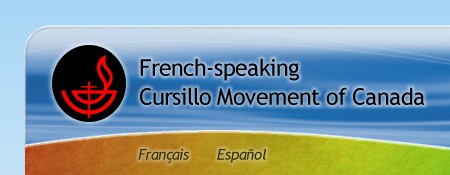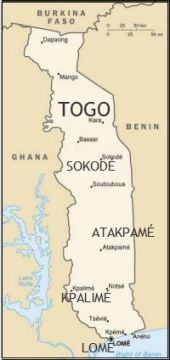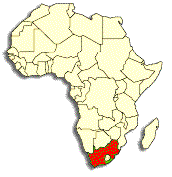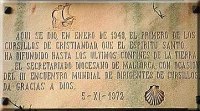
Cursillo Movement > News & Events
Cursillo News & Events Worldwide
- Encouraging expansion of the CCM in Africa
- Another pioneer of the CCM died: Guillermo Payeras
- News Archives


On March 31 to April 3, the Cursillo Movement will be introduced in a fourth diocese of TOGO: the Diocese of Sokode; making it the sixth diocese in the French West Africa since its inception in BENIN in 2003. In addition, an MCFC "Comité pour l'expansion du MC dans la francophonie" receives and reviews various requests for foundation in other African countries, including one that could materialize soon.
An email we received recently mentioned that the Cursillo Movement which started in SOUTH AFRICA in June 2009, has already reached a second diocese and could reach a third one before the end of the year.
In EQUATORIAL GUINEA, the Cursillo Movement has been established since 1960 and is very active in all its dioceses. During his apostolic visit to Bata (Equatorial Guinea) February 18, 1982, Pope John Paul II stressed the very special contribution of Cursillo in the life of the Church in this country:
"You, the laity involved in the apostolic movements, especially in the Cursillo, you offer an increasingly decisive contribution to the Church's life without getting discouraged by the difficulties that stand in your way".
(Transl. from https://www.vatican.va/holy_father/john_paul_ii/homilies/1982/documents/hf_jp-ii_hom_19820218_bata-guinea_sp.html)
During the 60s, many cursillos were given in different African countries:
- in MOROCCO in 1962,- the CCM was active there until the departure of the Europeans after independence; - in the Portuguese colonies of MOZAMBIQUE and ANGOLA in 1963;
- in the English colonies of TANZANIA, in 1965, and RHODESIA (now ZIMBABWE) in 1966.
Unfortunately we have no information about the history and current status of Cursillo in these countries.
One thing for sure, the progress of the Cursillo Movement in the countries that we have mentioned above is most encouraging! We see it as an incentive to move forward because we are convinced of two things:
- that the future of Catholicism rests largely on its extraordinary growth on the African continent.
- that the Cursillo Movement - as noted by Pope John Paul II in Equatorial Guinea - can make "a decisive contribution to the life of the Church" in Africa by creating clusters of believers who, witnessing of God's Love, will get involved in their communities.
Thank God for the expansion of the Cursillo Movement in Africa!

At the entrance of the San Honorato Monastery, Majorca, commemorative plaque of Cursillo # 1, on January 1949. Fr Guillermo Payeras was its Spiritual Advisor with Fr Juan Capo (and Father Sebastian Gaya. on the third day).
Father Guillermo Payeras, who was one of the Spiritual Advisors of Cursillo # 1 in January 1949 at the Monastery of San Honorato died in Majorca, on July 16, 2010, after a long illness.
Father Payeras played a very important role, especially a few years later, when the Cursillo Movement had been discredited and banished from the diocese of Palma by Bishop Enciso. Most priests had followed Bishop Hervas in exile, but not Father Payeras who remained on site to accompany the laity. Having kept a good relationship with Bishop Enciso, he waited for the right moment and as soon as conditions seemed favorable, he took the opportunity to intercede for the Cursillo Movement.
He made Bishop Enciso understand that there was a group of lay people in his diocese who were well trained and eager to resume animation of their Cursillo retreats but only if they could do so without changing a iota to their way of doing it before the ban. His plea was outstanding, with so much intelligence, conviction and diplomacy that Bishop Enciso accepted the request of the group of lay people. He made only one condition, but a severe one: that neither Éduardo Bonnín nor Almendro would ever be part of Cursillo teams. Despite the fact that Eduardo was the guiding spirit of Cursillo and Almentro, an enthusiastic new convert, the group had no choice but to accept this condition.
So thanks to a priest who has remained close to the pioneers who had scattered throughout the diaspora, the Cursillo Movement was able to resume life in Majorca. Eduardo did not remain with folded arms: he accompanied the small groups being formed. And one day, Bishop Enciso admitted that he had been misinformed and that he had taken a very bad decision the day he decided to ban the Cursillo Movement.
_______________
Translated from the MCFC Quarterly Pèlerins en marche, no.33, fév. 2011, p.7. and from: Editorial De Colores, Argentina


